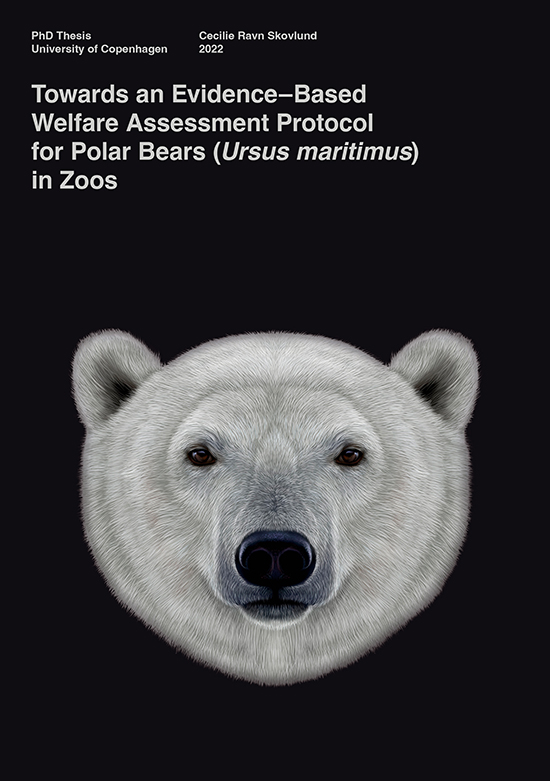Towards an Evidence-Based Welfare Assessment Protocol for Polar Bears (Ursus maritimus) in Zoos
PhD: Cecilie Ravn Skovlund
E-mail: cecilieravnskovlund@live.dk
 BACKGROUND
BACKGROUND
The polar bear serves as a flagship species in zoos, contributing to institutional conservation efforts. However, concerns over compromised welfare of captive polar bears have been raised, and impending welfare requirements put forward by global and regional zoological associations, soon necessitate institutions to evaluate and monitor welfare based on evidence-based tools.
PURPOSE
The purpose of the present PhD project was to begin the development of a welfare assessment protocol for polar bears in zoos, based on an adaptation of the Welfare Quality® and 24/7 Approach framework, with focus on behavioural welfare indicators.
RESULTS
A critical review of the literature was carried out to identify valid welfare indicators for captive polar bears. Assessed by content, construct and criterion validity, stereotypic behaviour was found to be the only validated behavioural indicator.
Owing to the lack of valid welfare indicators, indicators relating to the welfare criteria of ‘positive emotional state’, ‘expression of species-specific normal behaviour’ and ‘appropriate social environment’ of the welfare framework was developed and assessed for validity, based on a sample of 22 polar bears residing in nine zoos:
A Qualitative Behaviour Assessment was developed for the ‘positive emotional state’ criterion, which showed evidence of construct validity, through associations with other indicators, and short-term consistency, thereby serving as a potential useful and feasible tool to monitor emotional state of polar bears.
Likewise, Behavioural Diversity (Shannon Index) was tested for validity to serve under the criterion ‘expression of species-specific normal behaviour’. The index showed evidence of construct (both convergent and divergent) validity.
Relevant for the ‘appropriate social environment’ criterion, and to enable monitoring of social dynamics between polar bears, social relationship indices and a proxy measure for feasibility, were tested and proposed. Moreover, related polar bears were found to be in more positive dyadic relationships, and positive dyadic relationships were associated with less time spent in awake inactivity, plausibly indicating improved welfare of bears in these dyads, important for social management.
The welfare indicators were finally compiled into the adapted welfare framework, resulting in a holistic prototype welfare assessment protocol for polar bears in zoos.
FUTURE PERSPECTIVES
The prototype welfare assessment protocol highlights current welfare indicators, scoring schemes and gaps in knowledge for future development. The protocol thereby serves as a starting point for further protocol development, imperative for the care, management and conservation of polar bears.
